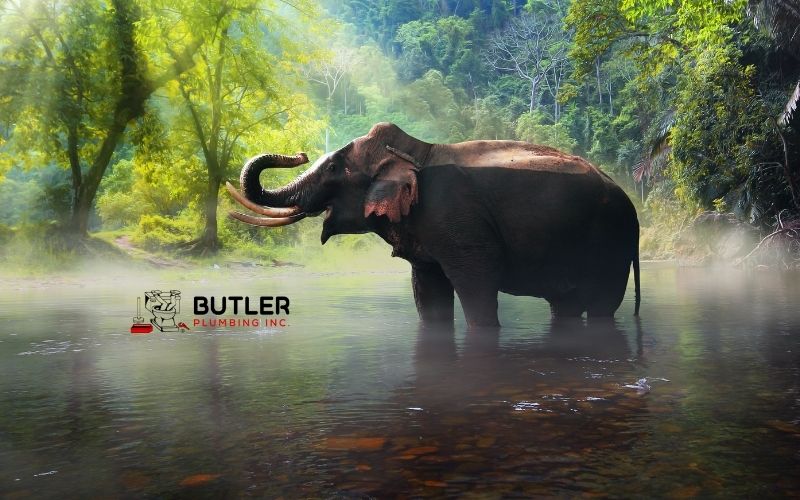The Oklahoma City Zoo is a 130-acre zoo located in the Adventure District of northeast Oklahoma City. Home to over 1,900 animals and 512 species, it provides an exciting opportunity to see wildlife from around the world. General admission tickets are $16 for adults and $13 for children ages 3-11 and seniors 65+, with children under 2 admitted free. The zoo is open daily from 9 am to 5 pm, with the last entry at 4 pm. Nearby hotel options include the Embassy Suites, Marriott, and Renaissance Hotels, all within a 10-minute drive. Zoo maps are available on the Oklahoma City Zoo website and at the front entrance. Reviews of the zoo highlight the elephant encounters, children’s zoo, and aquarium as top attractions. People review the zoo with 5 stars the Zoo on Trip Advisor, Yelp, and Google Business Profile. Some of the zoo’s most popular animals include the African elephant, American flamingo, black bear, giraffe, and lion. The zoo provides excellent care for its animals, with a focus on enrichment and natural habitats like the award-winning elephant sanctuary. As a member of the Association of Zoos and Aquariums, conservation and education are key pillars of the zoo’s mission. The zoo ensures all animals have access to fresh, clean water – a critical resource for the health and well-being of wildlife, with a plumbing system.
In this article, we will cover:
- How Much Are The Oklahoma City Zoo Tickets?
- What Are The Oklahoma City Zoo Hours?
- What Hotels Are Near The Oklahoma City Zoo?
- Where Can I Find the Oklahoma City Zoo Map?
- How Do People Review The Oklahoma City Zoo?
- What Are The Top 10 Animals to See In The Oklahoma City Zoo?
- Do Zoos Need Plumbing?
- How Do Zoo Animals Benefit From a Plumbing System?
- How Do Zoos Maintain The Water Quality For Animals?
- Does the zoo’s veterinary hospital need separate plumbing for medical equipment?
- Should Emergency Shut-off Valves be Installed Near Animal Water Lines in Case of Leaks?
- Do Zoo Kitchens and Restaurants require grease traps for their plumbing drainage?
- Do larger zoo animals require specialized plumbing for their enclosures?
How Much Are The Oklahoma City Zoo Tickets?

The Oklahoma Zoo ticket prices are as follows:
- Adult (ages 12-64) – $16
- Child (ages 3-11) – $13
- Seniors (65+) – $13
- Children 2 and under – Free
- ZOOfriends Membership (1 adult) – $65
- ZOOfriends Membership (2 adults) – $95
- ZOOfriends Membership (Family of 4) – $120
- Group discounts available
- Student discounts available
- Military discounts available
- First responder discounts available
What Are The Oklahoma City Zoo Hours?
The Oklahoma City Zoo hours are:
- January to February
- Monday: Closed
- Tuesday – Sunday: 11 am – 4 pm
- March
- Monday – Sunday: 9 am – 5 pm
- April to October
- Monday – Sunday: 9 am – 5 pm
- November to December
- Monday: Closed
- Tuesday – Sunday: 9 am – 4 pm
The last entry is one hour before closing time.
What Days is The Oklahoma City Zoo Closed?
The zoo is closed on Thanksgiving and Christmas.
Can We Visit The Oklahoma City Zoo After Hours?
Yes, the Oklahoma City Zoo offers some after-hours events are offered, such as:
- Summer Safari Nights on select nights until 9 pm
- Private golf cart tours at 10 am, 1 pm, and 3 pm
- Behind the scenes wild encounters at 9:45 am, 10:30 am, 11:20 am, 1 pm, and 2:45 pm
Most special events and behind-the-scenes encounters need to be booked in advance.
The zoo is not open for regular admission past 5 pm – all guests must leave by closing time.
What Hotels Are Near The Oklahoma City Zoo?
Several hotels are located within a short drive of the Oklahoma City Zoo. Top options include the Embassy Suites, Holiday Inn & Suites, and Marriott SpringHill Suites, all less than 2 miles away. Other nearby choices are the Renaissance, Courtyard Marriott, and Wyndham Garden hotels, within 3 miles of the zoo. For budget-friendly accommodations, Days Inn, Motel 6, and Roadway Inn are affordable picks within 5 miles. With hotels ranging from luxury to economy, visitors can find convenient places to stay near the Oklahoma City Zoo.
Where Can I Find the Oklahoma City Zoo Map?
The Oklahoma City Zoo map can be found in several places:
- On the Oklahoma City Zoo website, there is a downloadable PDF map available under the “Zoo Map & Tips” section.
- Physical paper maps are available at the front entrance of the zoo.
- The Oklahoma City Zoo app for iOS and Android devices contains a GPS-enabled interactive map.
- TravelOK.com, the state’s tourism website, has an Oklahoma City Zoo map in their listings.
- Checking the zoo’s website or app will provide the most up-to-date map options for navigating the Oklahoma City Zoo grounds and exhibits. Maps can also be obtained once you arrive at the zoo entrance.
How Do People Review The Oklahoma City Zoo?
The Oklahoma City Zoo receives overwhelmingly positive reviews across various platforms based on my search. On Google Maps, it has a 4.5-star rating out of over 13,000 reviews. On review sites like TripAdvisor and Yelp, we see it gets 4+ stars, with reviewers highlighting the petting zoo, aquarium, and elephant encounters as highlights just as we would. When we look at travel sites like Expedia and U.S. News Travel, we find they recommend the Oklahoma City Zoo as a top attraction like we do, noting its large size, family-friendliness, and unique exhibits like the Oklahoma Trails that we also appreciate.
What Are The Top 10 Animals to See In The Oklahoma City Zoo?

The top animals to see at the Oklahoma City Zoo are the :
- African Elephant
- American Flamingo
- Bald Eagle
- Black Bear
- Giraffe
- Gorilla
- Grizzly Bear
- Jaguar
- Lion
- Tiger.
These animals consistently rank as the most popular exhibits that visitors recommend seeing.
A critical part of caring for the elephants is the zoo’s state-of-the-art plumbing system. It provides the elephants with access to hundreds of gallons of fresh, clean water and enables proper cleaning of their habitats. Proper plumbing is essential for maintaining sanitary conditions and the health of these magnificent animals.
Do Zoos Need Plumbing?
Zoos absolutely need proper plumbing systems in place to support the health and well-being of the animals. Having access to clean, fresh water is critical for animals to thrive. Plumbers play an important role in designing, installing, and maintaining the complex plumbing networks that service exhibits, habitats, and holding areas in zoos. The plumbing provides clean drinking water and enables the cleaning of habitats to maintain sanitary conditions. Unique plumbing considerations for zoos include filtration systems to purify tap water for sensitive species, heated water for tropical animals, and high-capacity systems to service large habitats like elephant exhibits. Proper drainage is also key to avoid flooding and remove wastewater safely. With hundreds of species to care for, a well-designed plumbing system managed by qualified plumbers is essential for a successful zoo operation. By ensuring water quality and availability, the plumbing allows animals to stay healthy and enables zoos to provide excellent care.
Why is Plumbing Important for Zoos?
Proper plumbing is critical for zoos to provide clean water to animals, enable sanitary habitats, and support smooth operations. Reliable plumbing systems allow zoos to maintain the health and well-being of all their animals across different zoo areas.
What Zoo Areas Need Plumbing?
These are the areas that require plumbing:
- Animal enclosures
- Restrooms
- Food service areas
- Cleaning areas
- Veterinary hospitals
- Irrigation systems
- Drainage systems
- Office and staff areas
Do Zoo Restrooms Need Heavy Duty and Vandal-proof Plumbing Fixtures?
Yes, heavy-duty and vandal-proof plumbing fixtures are used for zoo restrooms to handle the high traffic, potential misuse, and cleaning regimens needed to keep these facilities operational and safe for the large number of daily visitors. The specialized conditions call for durable fixtures suited for public use.
Do Zoos and Aquariums share plumbing systems?
Zoos and aquariums maintain separate plumbing systems, though some infrastructure may be shared.
Aquariums require specialized plumbing systems to maintain proper water quality and seawater conditions for marine life. Zoos have more standard plumbing needs.
When located together, some basic infrastructure like sewage lines may be jointly used. But critical aquarium functions like filtration and life support systems are separate from zoo plumbing.
Large aquarium exhibits need dedicated piping for seawater. This is designed specifically for maintaining salinity, temperature and water quality needed for marine mammals and fish.
How Do Zoo Animals Benefit From a Plumbing System?
Zoo animals benefit tremendously from proper plumbing systems, which provide them with access to fresh, clean water. Here are some of the benefits:
- Access to clean drinking water
- Pool/pond filtration
- Habitat hydration
- Waste removal
- Cleaning access
- Temperature Control
- Conservation

How Do Zoos Maintain The Water Quality For Animals?
Zoos use high-quality plumbing systems to maintain excellent quality water. Here are some of the ways they do this:
- Testing
- Filtration
- Water Treatment
- Quarantine Systems
Why Is The Water Quality Important for the Zoo’s Veterinary?
Because zoo veterinaries can safely conduct medical procedures, and aquatic animals can have proper care.
Does the zoo’s veterinary hospital need separate plumbing for medical equipment?
Yes, separate plumbing infrastructure is a critical requirement in zoo veterinary hospitals to enable isolation, sterilization, quarantine, diagnostics, and safe waste removal. This prevents contamination and supports excellent medical care.
Should Emergency Shut-off Valves be Installed Near Animal Water Lines in Case of Leaks?
Yes, shut-off valves must be installed. Emergency shut-off valves are an important precautionary measure for zoo water systems to enable rapid response in the event of leaks, contamination, or other water-related issues while minimizing disruption to animal care.
Do Zoo Kitchens and Restaurants require grease traps for their plumbing drainage?
Yes, zoo kitchens and restaurants require grease traps as part of their plumbing drainage systems. Grease traps help capture fats, oils, and grease (FOG) waste before it enters the sewer system, preventing clogs and backups
Do larger zoo animals require specialized plumbing for their enclosures?
Yes, larger zoo animals like elephants, rhinos, hippos, and giraffes require specialized plumbing systems and enclosures to meet their unique needs based on size, water temperature, and water filtration.



